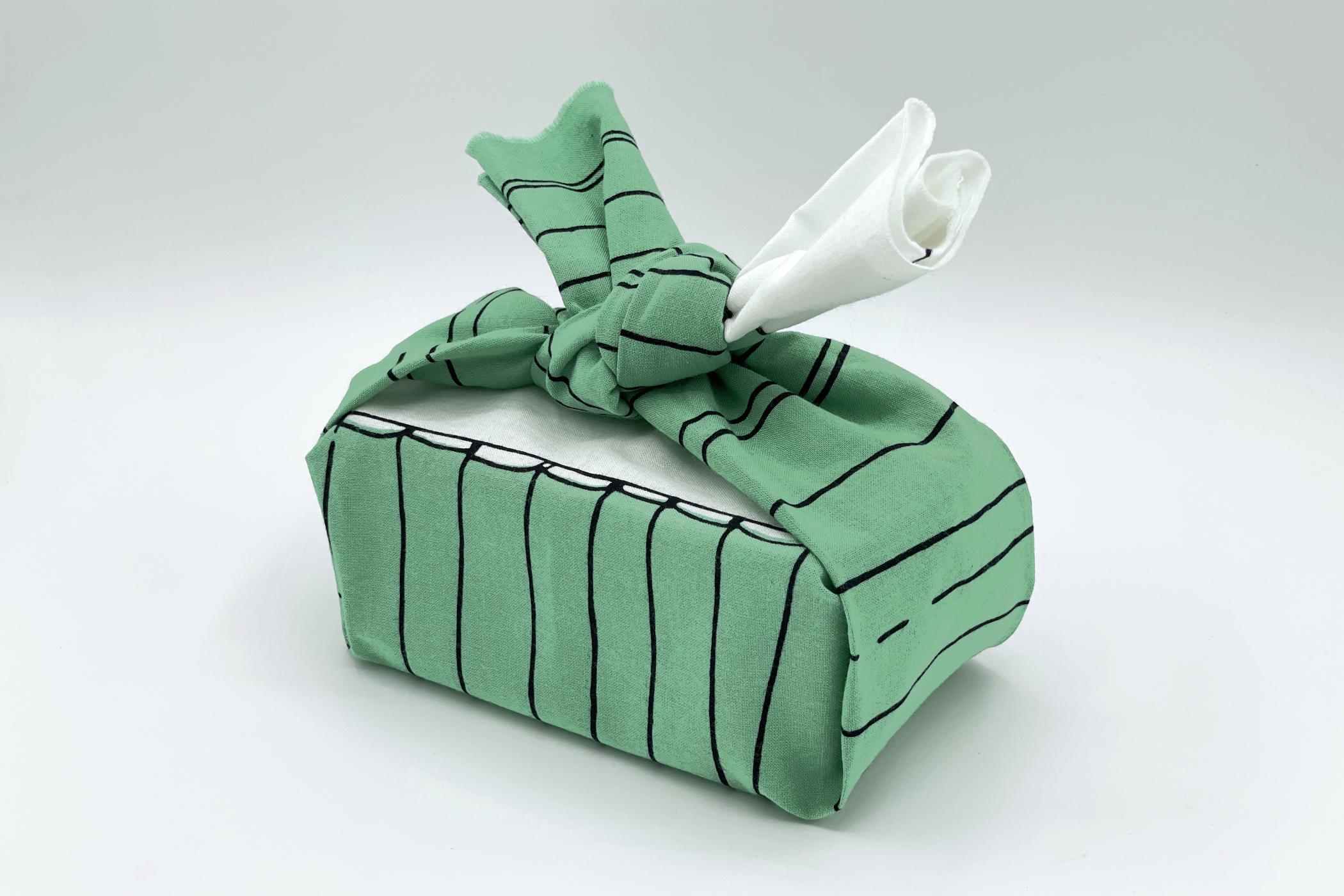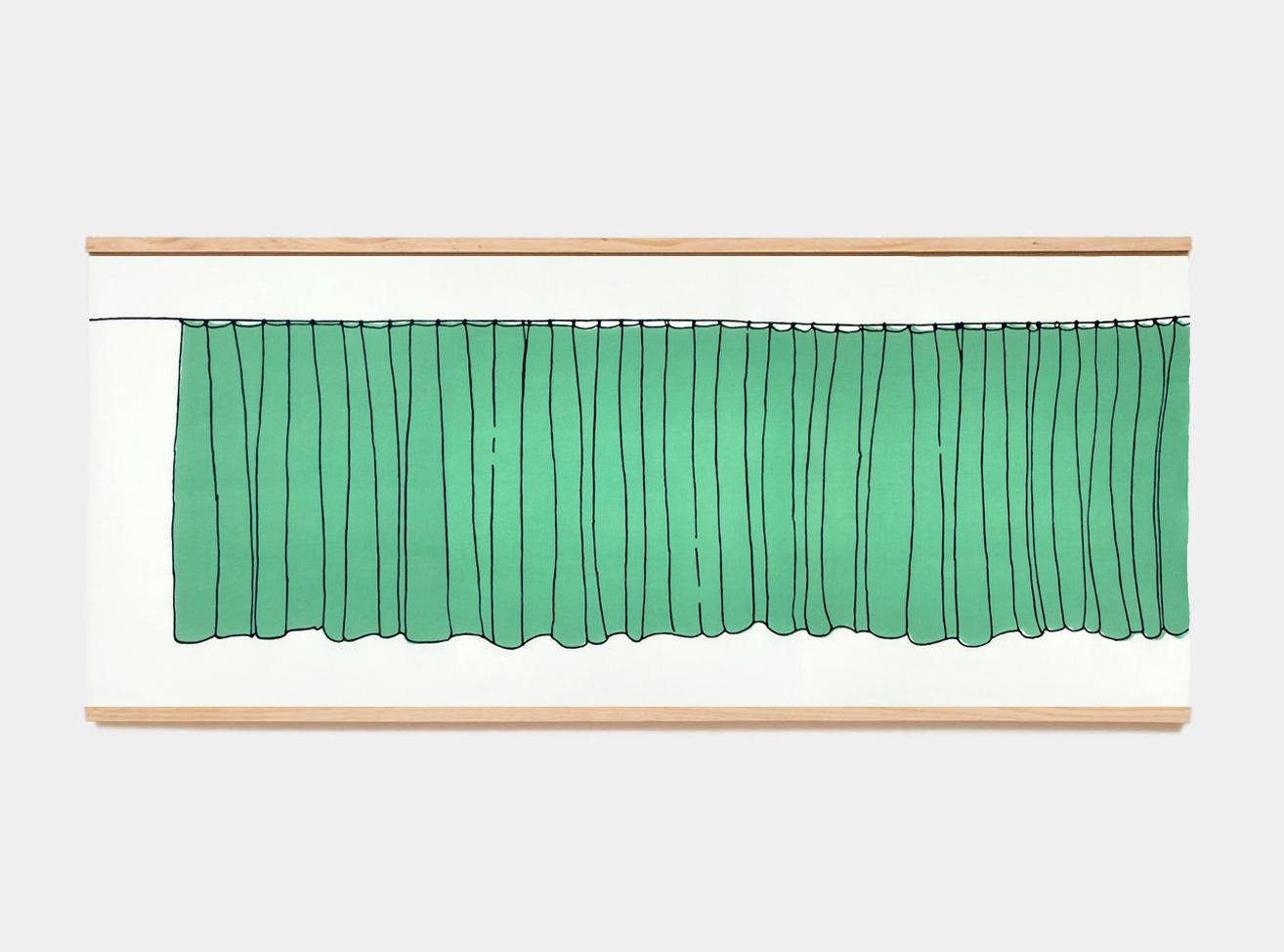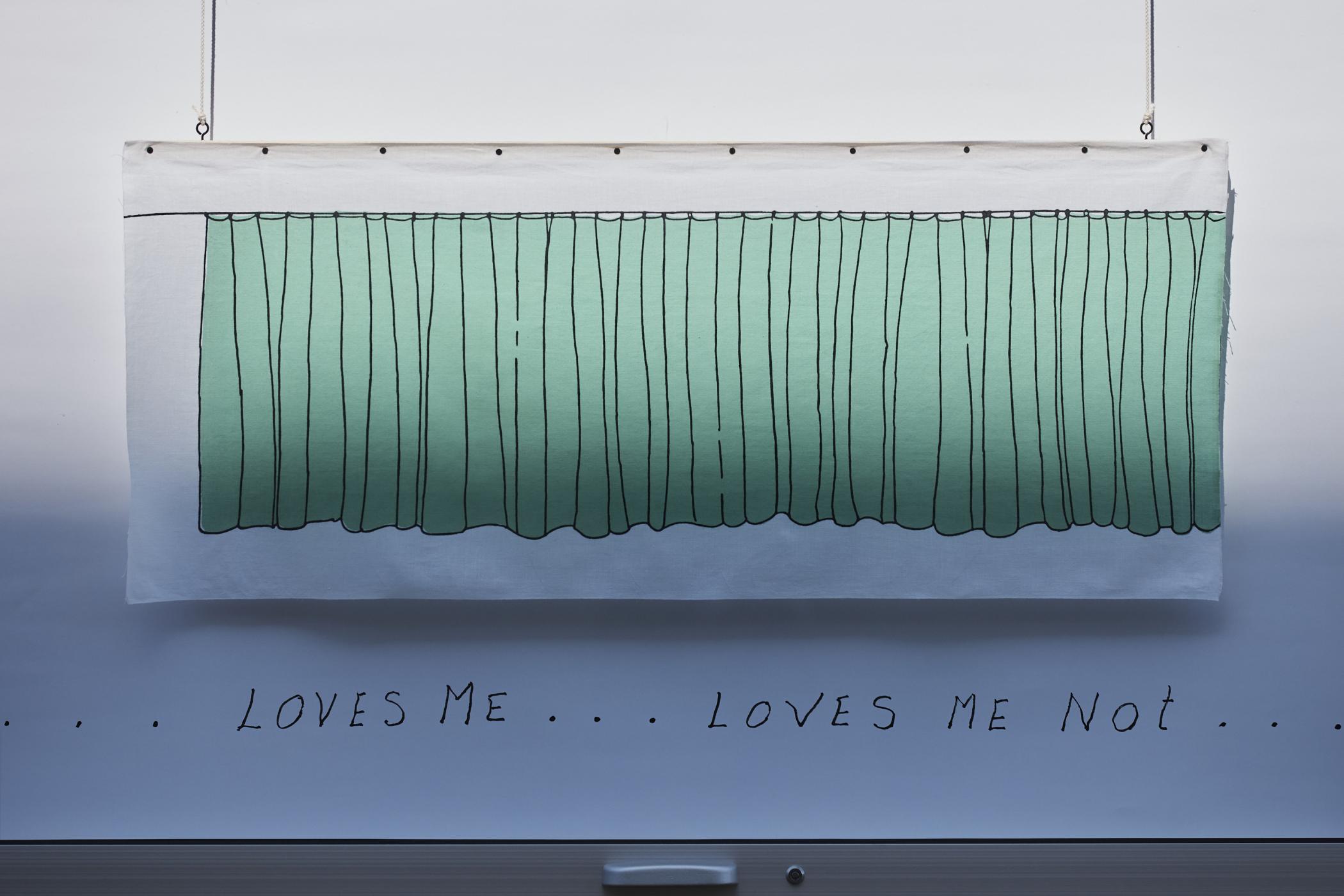Ana Jotta
Loves me, Loves me not...
2022
Hand-dyed tenugui and double-sided obi
90 x 37 cm and 27 x 8 cm
Edition of 100 copies, numbered and stamp signed with an original hanko seal
A tenugui (手拭い) is a Japanese traditional cloth made from cotton. Although te (手) means “hand” and nugui (拭い) means “wiping,” it is much more than just a hand towel. Since the eighth century at least, it has been used as a washcloth, dishcloth, headband, protective wrapping, decorative item, among many other uses. Its unhemmed edges allow it to dry fast, and to be torn for use as a bandage, for example.
This tenugui was hand-dyed using the chūsen method, in which the color soaks into the cloth in such a way that the pattern appears clearly on both sides, unlike in modern printing techniques. Furthermore, it was made following a specific and delicate process called hosokawa-zome, in which two colors can be applied side by side or on top of one another without their blending. The cloth is dyed twice, and washed and dried in between. Since the drying causes the cloth and its first pattern to shift, the second layer of color overlaps in slightly unexpected ways. This feature highlights the skills of the artisan and makes each item unique.
For this edition, Ana Jotta played with the reversibility typical of the chūsen method. The work has indeed no front side and back side. There is no right or wrong orientation, no original design or duplicate. Depending on one’s personal interpretation and cultural reading direction, the curtain is about to be opened or to be closed. And the title Loves me, Loves me not… emphasizes this ambiguity.
The curtain is a central element in Jotta’s work, which she developed as early as the 1970s, when she worked as a stage designer for theater and cinema. In her practice as a visual artist, she often used curtains—and other textile works—as a foldable and adaptable device to take over any exhibition space, as well as a narrative element associated with concealment and revelation. The tenugui is closed with a double-sided obi, extending the play with this motif: Ana Jotta draws the curtains and offers a glimpse behind the scenes.






















